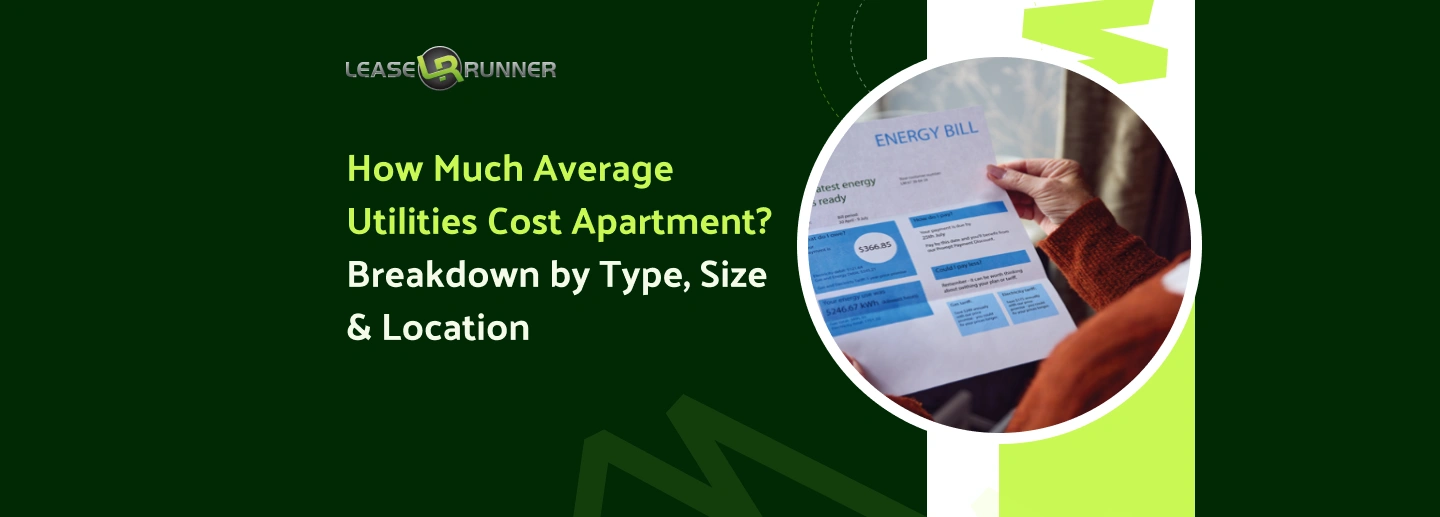The holding fee for an apartment is an important payment that renters make to reserve a unit before signing a lease. It shows commitment and protects the landlord from losing rental income if the tenant backs out. The agreement and state laws, like California's, determine if the fee is refundable.
The holding fee is distinct from other common upfront costs, such as the initial application fee for rental screening, which covers background and credit checks. This article will explain the fee by covering four main points: the fee versus the security deposit, when landlords can charge it, and how much to charge.
We also discuss the good and bad parts, and answer common renter questions. These questions include: Does the holding deposit fee pay for rent? Do you need to pay the holding fee before you view the place? This information helps renters and landlords know the rules. Let's scroll down and learn more now!
What Is a Holding Fee for an Apartment?

A holding fee for an apartment is a payment made by a potential renter to secure a rental unit temporarily while the application process is underway. This fee lets the landlord remove the apartment from the market, ensuring no one else can rent it during this period.
Typically, the reservation deposit for an apartment is about one month’s rent or less, but this can vary by market demand. For instance, in competitive markets like New York City, a holding fee for an apartment in NYC may be higher to reflect demand and urgency.
Once the application is approved, the holding fee usually becomes part of the final move-in funds. In some places, once the renter proceeds to lease, the fee often applies to the first month’s rent or the security deposit. If they back out, the tenant may lose this amount, depending on the agreement.
Therefore, renters need to understand the exact timeframe for which landlords will hold a unit for them. No matter whether the holding deposit goes towards rent (which actually depends on the states' laws and the agreements' clauses) or remains separate, this information should be clear.
Is a Holding Deposit for an Apartment Refundable?
A holding deposit may or may not be refundable. It often depends on the lease terms and local laws. In many cases, if you sign the lease, the holding fee for the apartment will apply toward your first month’s rent or security deposit. But if you choose not to rent the apartment, your deposit for the apartment's refundable status varies by agreement. It’s crucial to know the specific holding deposit refund laws in your area, as they dictate a landlord’s obligations.
For example, in California, holding deposit refund laws provide specific protections. Landlords may keep the deposit if the tenant backs out without good cause.
Renters should also be familiar with specific state rules, such as those governing the California rental application fee, which may differ from holding fee regulations. However, if the landlord cancels or the rental is unavailable, the fee must be returned.
Holding Fee vs. Security Deposit: What's the Difference?

Understanding the holding fee vs security deposit is key when renting an apartment. A holding fee is a small amount paid early in the rental process. It reserves the unit while the landlord reviews the application.
For example, in a busy rental market like the holding fee for an apartment in NYC, renters pay a holding fee to stop others from renting the same apartment. The fee usually covers part or all of one month's rent and specifies how long apartments will hold a unit. This period is typically short, often limited to 24-72 hours, though it can be extended up to a few weeks via written agreement.
In contrast, a security deposit (especially for an apartment) is larger. Renters pay it before moving in. This deposit protects the landlord against unpaid rent or damage to the property. Unlike the holding fee, it is usually refundable if the apartment is returned undamaged.
Some places have rules about holding deposit refunds in California, limiting when landlords can keep or must return fees. For example, landlords typically keep the holding fee if renters leave the deal without a good reason. But if landlords cancel, renters get a full refund.
Renters should also check whether a holding deposit goes towards rent in their contract. Often, landlords apply the holding fee to the first month’s rent or the security deposit.
When Can a Landlord Charge a Holding Fee?
A landlord can charge a holding fee when a renter wants to reserve a property before signing the lease. The holding deposit shows that the renter is serious about moving in. It also protects the landlord from casual inquiries that waste time.
In busy rental markets, landlords face heavy demand. A holding fee for rental property helps them take the unit off the market while reviewing the application. For example, in a tight rental market like Austin, a landlord may ask for $300 to hold an apartment for five days. During that time, the landlord checks income and background details. The property should stay off listing sites such as Facebook Marketplace.
Sometimes, a landlord or broker may offer incentives, such as waived application fees for apartments, to attract tenants quickly in competitive areas, making the holding fee a key upfront cost.
More importantly, landlords must always share clear details about the refund policy and how long the rental unit will be held. Most set a short time frame, usually between 3 to 7 days. If the tenant changes their mind or fails the screening, the landlord must say whether the holding deposit will be refunded.
A short written holding deposit agreement prevents confusion. It should list the property address, the fee amount, and the date to sign the lease. This helps build trust and avoids disputes between landlords and tenants.
How Much Should a Holding Fee Be?
The holding fee amount should feel fair and easy to explain. A common range for the holding fee for an apartment is typically between $100 and $500, though some landlords charge half to one full month of rent. For instance, if rent is $1,200, a landlord can ask for $600 as a holding deposit.
The final cost is highly influenced by the monthly rent amount, the current demand in the local market, and the number of days the landlord agrees to hold the unit off the market. Charging too much can cause problems. It's because high or overpriced fees may break tenant laws or look unfair. Therefore, keeping fees moderate helps landlords stay within Fair Housing Laws.
Renters should budget for this fee along with other potential costs, like figuring out who pays the broker fee when renting, which is common in many large cities. Using tools like LeaseRunner helps a landlord set a proper holding fee. We also make receipts and guide landlords on refunds. All in all, clear communication builds confidence and keeps the rental process smooth for both sides.
How to Create a Legally Sound Holding Deposit Agreement?

A legally sound holding deposit agreement protects both the landlord and the tenant. It makes sure every detail about the holding fee is clear and fair. The steps below show how to create a strong agreement that avoids misunderstandings and legal issues.
- Step 1: Write Down the Basic Details
Start by listing all the main facts about the property. Include the rental unit address, the tenant’s name, and the landlord’s contact information. Mention the exact holding deposit amount and the date it was paid. For example, if a tenant pays $400 to hold a downtown apartment for five days, write that clearly in the document. Transparency keeps both sides informed.
Also, write how the tenant paid the holding fee, whether it’s by check, electronic transfer, or cash app. Providing a small receipt or email confirmation builds trust and acts as proof of payment.
- Step 2: Describe What the Fee Covers
Explain what the holding deposit secures. Make it clear that the landlord will stop advertising or showing the unit while processing the tenant’s application. Include a note that says how long the property will be held. A common time frame is 3 to 7 days. For instance, “The apartment will be held until Thursday, March 7.” This helps avoid confusion about the unit’s availability.
- Step 3: Add Lease Signing Dates and Deadlines
State when the tenant must sign the lease agreement. If the tenant delays beyond the deadline, the holding fee may become non-refundable. For example, the agreement may say, “The tenant must sign the lease by March 10 or forfeit the deposit.” Simple rules like this protect the landlord from vacancy losses.
- Step 4: Explain the Refund Policy
Include a clear refund policy. Say when and how the tenant can get their holding deposit back. If the landlord denies the application or rents to someone else, the deposit should be refunded in full. If the tenant cancels, note whether any part is kept to cover paperwork or lost rent time.
- Step 5: Follow All Laws and Regulations
Every state has its own rental law or landlord-tenant act. Check your local rules before writing a holding deposit agreement. Some states require refunds within a specific number of days; others set limits on the fee amount. Using online resources or tools like LeaseRunner helps ensure compliance and keeps your rental process legal and professional.
In summary, a comprehensive holding deposit agreement serves as a binding contract that manages risk for both parties by clearly defining terms, costs, and deadlines. This legal clarity ensures that the temporary reservation process converts smoothly into a long-term tenancy or resolves fairly if the deal falls through.
Essential Elements of a Holding Deposit Agreement
- Clearly state the property address, tenant’s name, and landlord’s contact details.
- Specify the holding deposit amount and payment method—cash, bank transfer, or online platform.
- Include the date paid and note how long the property will be held, usually 3–7 days.
- Explain the purpose of the holding fee; it ensures the landlord pauses advertising while reviewing the tenant’s application.
- Outline the lease signing deadline, such as: “The tenant must sign the lease by March 10.”
- Add a plain and direct refund policy. For instance, if the application is denied, return the fee in full; if the tenant cancels, state what part is kept to cover lost rental time or processing costs.
- Provide space for both parties’ signatures to confirm the agreement’s terms.
For instance, a landlord in Dallas accepts a $400 holding deposit on March 1 to reserve a one‑bedroom apartment. The listing is taken down during background verification, and the tenant agrees to sign the lease by March 6. This short, written record protects both sides from misunderstandings.
Key Legal Considerations
- Always follow your state’s rental laws or landlord‑tenant act, since refund timelines and fee limits vary.
- Clarify in writing whether the holding fee will be applied to the first month’s rent or the security deposit once the lease is signed.
- Define cancellation terms precisely. State if the tenant backs out, whether any part of the holding deposit becomes non‑refundable. Before finalizing the lease, it is also crucial for renters to understand what utilities are included in rent, as this will impact their total monthly housing expenses.
- Use digital management tools like LeaseRunner to create compliant contracts, process payments, and issue e‑receipts.
- Keep copies of every holding deposit agreement and all related communication for legal protection.
- Avoid vague terms and use simple language to make the policy easy to understand for both the tenant and the landlord.
Following these steps ensures every holding deposit is handled fairly, legally, and with full transparency.
Pros and Cons of Charging a Holding Deposit

A holding deposit plays a key role in the rental process. It helps landlords manage property availability while giving tenants a fair chance to secure a home. However, using a holding fee policy also comes with responsibilities. When used properly, it builds trust and prevents wasted time; when used poorly, it leads to misunderstandings and legal issues. Let’s look at the main benefits and drawbacks of charging a holding deposit.
Pros of Charging a Holding Deposit
Charging a holding deposit offers several advantages for landlords and tenants. It ensures only serious applicants commit to a property, helping to save time and reduce cancellations.
- Secures serious tenants: When renters pay a holding fee, they show real interest in the property. For example, a landlord in Phoenix may require a $250 holding deposit to block off showings for others. This step filters out non‑committed renters and avoids repeated scheduling.
- Reduces market uncertainty: The holding deposit allows landlords to hold the unit with confidence while checking applications and income documents. It keeps the property out of competitive listings, giving landlords time to assess without losing good tenants to faster deals.
- Provides early cash flow: A holding deposit creates a small upfront payment before move‑in. For instance, if a renter pays $400 to temporarily secure a downtown studio, the landlord gains instant liquidity and can apply the money toward advertising or cleaning costs once the lease is signed.
Cons of Charging a Holding Deposit
While holding deposits can be helpful, they must be handled carefully. Miscommunication or unfair terms can cause problems for both sides.
- May cause tenant distrust: If the refund policy or time frame isn’t clear, tenants may fear losing money. Example: A renter pays a deposit but later learns it’s non‑refundable for reasons not disclosed.
- Risk of legal issues if unclear: Rental laws differ by state. If the landlord keeps a holding fee without documented terms, it may lead to landlord‑tenant disputes or legal claims.
- Might deter renters in soft markets: In areas with plenty of vacant units, asking for a holding deposit for rental property may discourage potential renters who prefer listings with no upfront cost.
When written clearly and managed under rental law, a holding deposit agreement can protect everyone and keep the rental process quick, fair, and transparent.
Red Flags to Watch Out for When Accepting Holding Fees
A holding deposit can help secure a rental unit, but it can also bring risks if not handled carefully. Landlords must protect both their property and reputation by following ethical and legal practices. Being aware of red flags ensures transparency and prevents landlord‑tenant disputes. Below are key warning signs to look out for when accepting a holding fee for rental property.
1. Lack of Written Agreement
Never accept a holding deposit without a signed document. A written holding deposit agreement should explain the amount, holding period, refund policy, and next steps. For example, if a tenant pays $300 in cash to reserve an apartment but there’s no written proof, both sides could later disagree on refund terms or move‑in dates.
2. Unreasonably Long Holding Periods
A holding period should be short and specific, usually between three and seven days. If a landlord promises to hold a unit for several weeks, it may lead to lost rental income or missed applicants. For instance, holding a property for three weeks while waiting for paperwork often causes delays and uncertainty.
3. No Receipt or Proof of Payment

Always issue a receipt or digital confirmation after receiving a holding fee. Whether paid through bank transfer or online tools like LeaseRunner, keeping proof of payment ensures both parties can verify the transaction. Lack of documentation can lead to mistrust or legal problems later on.
4. Unclear Refund Policies
A transparent refund policy prevents arguments. The agreement should state whether the holding deposit is refundable if the tenant withdraws or fails screening. For example, if the landlord rejects the tenant’s application, the full fee should be returned within a set timeframe.
5. Demand for Holding Fee Before Viewing
It is unethical to ask for a holding deposit before the renter has viewed the property. Always let tenants see the unit first. Asking for money early raises suspicion and may look like a rental scam.
6. High Holding Fee Compared to Rent
The holding fee amount should be fair and proportional, usually no more than half to one month’s rent. For instance, charging $1,000 to hold a $900 apartment seems excessive and may violate the rental law. A fair balance builds trust and supports a smooth rental process.
Conclusion
The holding fee for apartment rentals helps landlords secure real tenants and cut wasted time. It also protects renters from losing the unit they want. A landlord can use a short holding deposit agreement that lists the fee amount, payment date, and refund rule.
Clear notes prevent conflict if the tenant cancels or fails screening. Fair pricing is also key; charging half a month’s rent keeps things balanced and legal. Using tools like LeaseRunner helps landlords send receipts, follow rental laws, and track payments safely. A transparent process builds trust and makes every holding deposit for rental property smooth and fair.
FAQs
Can landlords keep the fee if the tenant fails the background check?
No, they can't. A landlord cannot keep the holding fee if the tenant fails the background or credit check, unless this is clearly stated in a signed holding deposit agreement.
For example, if a renter pays $300 to reserve an apartment and is later rejected due to poor credit, the holding deposit must be refunded in full. Keeping the fee without disclosure may violate rental law or Fair Housing rules.
Is a Receipt Required for a Holding Deposit?
Yes. Always provide a written receipt or email confirmation after receiving a holding fee. The receipt should list the amount, property address, date, and payment method. Using rental tools like LeaseRunner helps track and document all payments clearly.
What Happens if the Landlord Backs Out?
If the landlord changes their mind or rents the unit to another applicant, the tenant has a right to a full refund. For instance, if the property owner finds another renter after accepting a deposit, they must return the holding deposit immediately to avoid disputes.
Do You Pay a Holding Deposit Before Viewing?
Ethical practice discourages payment before viewing. Tenants should inspect the property first to confirm its condition. Asking for a holding deposit for rental property before a viewing can look misleading and raise scam concerns.







